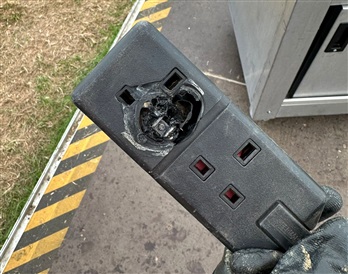Hi,
I'm working with a machine that has a data plate for 3.2kW but this is peak, when all elements are running. I have it running on a 13A RCD protected supply with no problems, but it has been suggested this is illegal. I could understand a small machine running on a large supply, but the fact that it draws less current than the data plate surely means it is safe, although maybe running closer to the current limit.
In service testing regs talk about fusing of circuit to protect, but never the other way round.
Can anyone quote me a reg saying either way?

